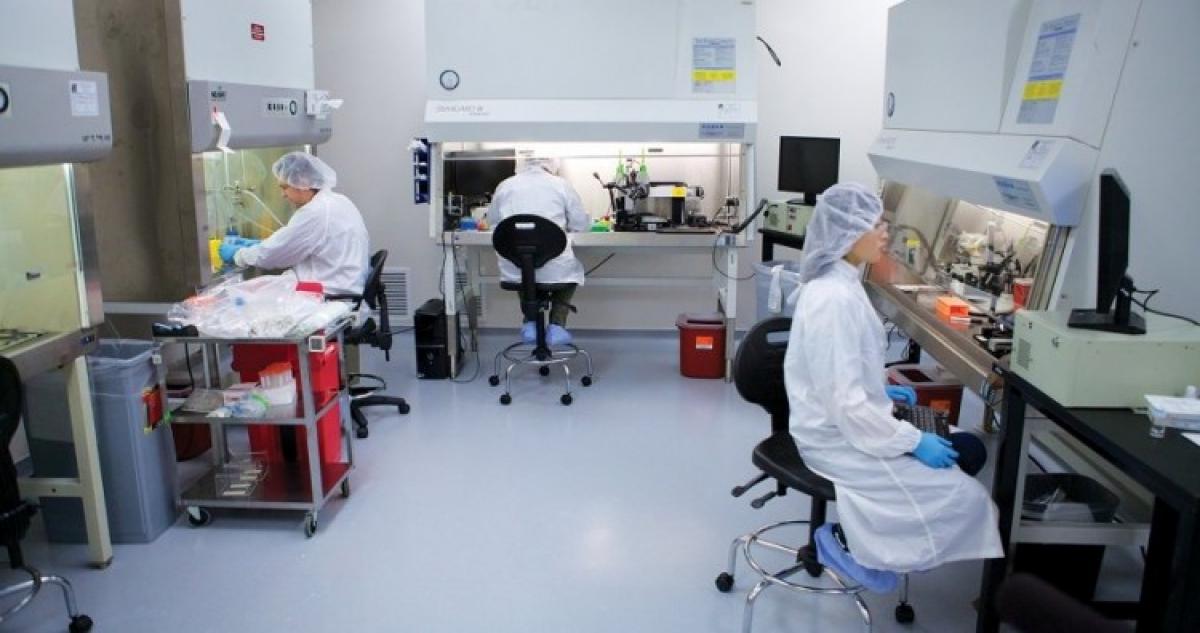Live
- Deputy CM Bhatti Vikramarka Inaugurates Power Substation, Criticizes BRS
- Major Phase in Old City Metro Land Acquisition, Cheques to Be Distributed
- Tragic Road Accident Near Medchal Checkpost: Family of Three Killed, Child Injured
- Road Accident on Hyderabad-Warangal National Highway: One Dead, Five Injured
- Massive Fire Breaks Out at Minerva Hotel in Hyderabad’s Himayatnagar
- PM Modi sets ball rolling for India to become world’s 2nd largest metro rail network
- Sexual assault case: Anna University asks students to use only bicycles inside campus
- Lack of genuine political leadership led to Manipur violence: Apex Meitei body
- Stage 3 restrictions under GRAP lifted in Delhi-NCR as AQI shows improvement
- No room for unmarried couples: Oyo explains check-in policy for partner hotels
Just In

At the local gift shop, you must have noticed those glass show pieces, a transparent block of glass with a 3D heart shape suspended inside it. Very likely that the showpiece was printed on a 3D printer.
At the local gift shop, you must have noticed those glass show pieces, a transparent block of glass with a 3D heart shape suspended inside it. Very likely that the showpiece was printed on a 3D printer. In India, this is one of the few exposures of the common man to a 3 D printed object. But things are expected to change rapidly.This article is to acquaint you all to the current applications of 3 D printing technology in the medical field, especially in the field of child heart disease.
Imagine being part of the team of doctors taking care of a sick baby with a complex heart defect. The baby’s heart has a hole, the vessels are connected in a wrong manner and the vessel to the lungs is narrow at the point it leaves the heart. You all think hard about what would be best for the baby. The first option is to perform a surgery to close the hole, reconnect the vessels to the correct spots and open up the narrowing. The second option is to leave the heart as it is inside, but later the vessel connections so that only pure-blood enters and leaves the heart. The impure blood is channelized to the lungs without the intervening pump of the heart. Your team obviously wants the first option as it means the heart defects will actually be corrected and the baby’s heart will resemble a normal heart.
But the problem is that this is hard for the surgeon to make out whether he/she will be able to perform the corrections based on the echocardiogram (ultrasound of the heart). The echocardiogram is currently the best method to image the heart prior to surgery. If the surgeon opens up the heart in the operation theatre and exposes the heart only to find out that the correction is not possible, then the surgery goes to waste. This is where a 3D printed heart model can help. This model is printed from data fed to the printer from a CT scan or MRI of the patient’s heart. The model can be printed in POP (plaster of Paris) type material or can be made from a softer material that is closer to the actual texture of the heart. The model is true to size. The team can study the fine details of the heart in the model and come to a conclusion with a greater conviction. Thus, surprises in the operation theatre are avoided and the patient gets better care. If the model is made of a softer material the surgeon can actually operate on the dummy heart (practise on the steps) beforehand.
In certain other kinds of heart diseases, the valve is diseased. A model of the defective valve is printed and the surgeon gets a chance to visualize and practise the complicated steps pf valve repair better. There are also times when a vessel is narrow and it needs to be opened up in the cardiac catheterization laboratory. In complicated cases, studying the 3D printed heart model of the narrow vessel and practising the steps to stent it open, simplifies steps of the actual procedure.
3D printing is similarly used in diseases of other parts of the body. For example, tumours in the brain, kidney, liver etc. can be localized better and a clearer surgical access plan can be drawn prior to surgery. Plastic surgery and dentistry also use 3D printing.The future belongs to 3D printing. The time is not far off when part of or whole body organs can be bio printed on special 3D printers.
Dr. Swati Garekar, Consultant Paediatric Cardiologist, Fortis Child Heart Mission - Fortis Hospital, Mulund

© 2024 Hyderabad Media House Limited/The Hans India. All rights reserved. Powered by hocalwire.com







